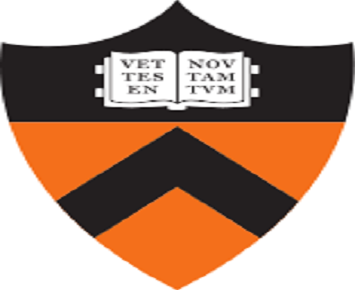Live in USA
 |
Princeton University is a private Ivy League research university in
Princeton, New Jersey, United States.
Founded in 1746 in Elizabeth as the
College of New Jersey, Princeton is one of the nine Colonial Colleges
established before the American Revolution as well as the fourth chartered
institution of higher education in the American colonies.5a The institution
moved to Newark in 1747, then to the current site nine years later where it was
renamed as a University in 1896.10 The present-day College of New Jersey in
nearby Ewing Township, New Jersey, is an unrelated institution. Princeton had
close ties to the Presbyterian Church, but has never been affiliated with any
denomination11 and today imposes no religious requirements on its students.b
Now, the University provides undergraduate and graduate instruction in the
humanities, social sciences, natural sciences, and engineering.13 It does not
have schools of medicine, law, divinity, nor business, but it does offer
professional degrees through the Woodrow Wilson School of Public and
International Affairs, the School of Engineering and Applied Science, and the
School of Architecture. The institute has ties with the Institute for Advanced
Study, Princeton Theological Seminary, and the Westminster Choir College of
Rider University.c Princeton has been associated with 35 Nobel laureates, 17
National Medal of Science winners, 2 Abel Prize winners, 5 Fields Medalists, and
3 National Humanities Medal recipients.
New Light Presbyterians founded the
College of New Jersey, later Princeton University, in 1746 in order to train
ministers.14 The college was the educational and religious capital of
Scots-Irish America. In 1756, the college moved to Princeton, New Jersey. Its
home in Princeton was Nassau Hall, named for the royal house of William III of
England.
Following the untimely deaths of Princeton's first five presidents,
John Witherspoon became president in 1768 and remained in that office until his
death in 1794. During his presidency, Witherspoon shifted the college's focus
from training ministers to preparing a new generation for leadership in the new
American nation. To this end, he tightened academic standards and solicited
investment in the college.15 Witherspoon's presidency constituted a long period
of stability for the college, interrupted by the American Revolution and
particularly the Battle of Princeton, during which British soldiers briefly
occupied Nassau Hall; American forces, led by George Washington, fired cannon on
the building to rout them from it.
Before the construction of Stanhope Hall
in 1803, Nassau Hall was the college's sole building. The cornerstone of the
building was laid on September 17, 1754.16 During the summer of 1783, the
Continental Congress met in Nassau Hall, making Princeton the country's capital
for four months. Over the centuries and through two redesigns following major
fires (1802 and 1855), Nassau Hall's role shifted from an all-purpose building,
comprising office, dormitory, library, and classroom space; to classroom space
exclusively; to its present role as the administrative center of the University.
The class of 1879 donated twin lion sculptures that flanked the entrance until
1911, when that same class replaced them with tigers.17 Nassau Hall's iconic
bell rang after the hallí»s construction; however, the fire of 1802 melted it.
The bell was then recast and melted again in the fire of 1855.
In 1969,
Princeton University first admitted women as undergraduates. In 1887, the
university actually maintained and staffed a sister college, Evelyn College for
Women, in the town of Princeton on Evelyn and Nassau streets. It was closed
after roughly a decade of operation. After abortive discussions with Sarah
Lawrence College to relocate the women's college to Princeton and merge it with
the University in 1967, the administration decided to admit women and turned to
the issue of transforming the school's operations and facilities into a
female-friendly campus. The administration had barely finished these plans in
April 1969 when the admissions office began mailing out its acceptance letters.
Its five-year coeducation plan provided $7.8 million for the development of new
facilities that would eventually house and educate 650 women students at
Princeton by 1974. Ultimately, 148 women, consisting of 100 freshmen and
transfer students of other years, entered Princeton on September 6, 1969 amidst
much media attention. Princeton enrolled its first female graduate student,
Sabra Follett Meservey, as a PhD candidate in Turkish history in 1961. A handful
of undergraduate women had studied at Princeton from 1963 on, spending their
junior year there to study "critical languages" in which Princeton's offerings
surpassed those of their home institutions. They were considered regular
students for their year on campus, but were not candidates for a Princeton
degree.
Download